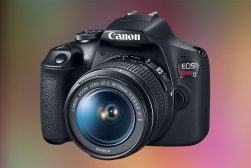
Best Lenses for Night Photography in 2024
Discover the best lenses for night photography, designed to enhance low-light performance and capture stunning images in the dark.
Shotkit may earn a commission on affiliate links. Learn more.
This guide will help you discover the best lenses for night photography.
Night photography presents a unique set of challenges and opportunities, requiring careful consideration of equipment choices.
Those choices can often be overwhelming, which is why we’ve put together this article to help you with one of the most important choices: lenses.
Let’s get started.
What Kind of Lens Is Best for Night Photography?
When choosing the best lenses for night photography, you need to think carefully about exactly what it is you want to capture after dark.
And, once you have your photography goals, you’ll be able to determine which lens features will work best for you.
Aperture
The best lenses for night photography have a wide aperture.
A wider aperture, represented by a lower f-stop number (e.g., f/1.4 or f/2.8), allows the lens to gather more light. This is essential in night photography to capture clear and detailed images.
Not only that, but letting in more light also reduces the time the shutter needs to stay open.
This reduction in exposure time is critical for capturing sharp images of night scenes, especially when shooting handheld or in situations where long exposures are impractical.
With wider apertures, photographers can also use lower ISO settings, minimizing the introduction of digital noise in low-light images. So, you get cleaner, more detailed shots.
Your aperture settings also influence the depth of field, determining the range of sharpness in an image, and what is in and out of focus.
Having control over the depth of field is crucial for emphasizing specific elements in the scene, such as capturing a starry sky with crystal clear stars or isolating a subject against a blurred background.
From a purely creative perspective, the wider the aperture, the more bokeh you can produce, too. This effect can look especially good in night photography, adding a dreamy quality to the image.
Focal Length
The choice of focal length determines the field of view and framing of your night scenes.
Wide-angle lenses with shorter focal lengths (e.g., 14mm to 24mm) are ideal for capturing immersive images of expansive night skies as they allow you to take in a wider field of view.
At the other end of the spectrum, telephoto lenses with longer focal lengths (e.g., 85mm to 200mm) enable you to zoom in on specific details in the night landscape.
This can be particularly useful when photographing distant subjects like cityscapes, illuminated landmarks, or specific celestial bodies.
Just make sure you use a tripod!
There’s also the possibility of having a zoom lens with variable focal lengths, which leads me to…
Prime or Zoom?
Considering zooms vs primes, there are merits to both these kinds of lenses. Your choice will very much depend on what kind of night photography you envision yourself doing.
Prime lenses, with their fixed focal lengths, often come with wider apertures. This makes them among the best lenses for night photography and astrophotography.
The ability to shoot at low f-stops enables shorter exposure times, reducing the risk of unwanted star trails in long-exposure shots.
Plus, those wide apertures (and the ability to use lower ISOs) make it much easier to shoot clear images.
Anyway, your images will usually be clearer with primes, as their optical design is generally of a higher quality.
Prime lenses are also often more compact and lightweight than zoom lenses, making them a good choice for, for example, street night photographers who value mobility and discretion.
Zoom lenses, on the other hand, provide users with more versatility by offering a range of focal lengths within a single lens.
This flexibility allows photographers to adapt to changing compositions without the need to switch lenses.
For walk-around night photographers who want to capture both wide-angle shots and detailed close-ups, a zoom lens would be the best choice.
Autofocus vs. Manual
Autofocus lenses make focusing quick and painless, making them ideal for situations when quick adjustments are essential.
For example, street photography or photographing moving subjects against the night sky.
Many autofocus lenses now offer continuous autofocus and smart tracking modes, which are great help when shooting dynamic situations like night events or even meteor showers.
Manual focus lenses provide photographers with absolute control over the focusing process.
That’s invaluable when fine-tuning focus in low-light situations, especially when capturing intricate details in the night sky, cityscapes, or astrophotography.
Manual focus lenses can also be beneficial in situations where long exposures are necessary, such as capturing star trails.
Once focus is set, there’s no risk of the autofocus system readjusting during a long exposure and messing up your shot.
Full-Frame vs Crop-Sensor Lenses
Full-frame lenses are designed for cameras with larger sensors and offer superior performance in low-light conditions.
The larger sensor size allows for better light-gathering capabilities, making full-frame lenses ideal for the challenges of night photography.
The larger individual pixels on a full-frame sensor also result in more detailed, cleaner images with reduced digital noise, an essential in night photography and astrophotography where preserving image quality is paramount.
Another benefit of full-frame lenses is that they provide a wider field of view compared to crop-sensor lenses with the same focal length.
That’s especially handy for shooting expansive nightscapes or if you want to include more of the surrounding environment in your compositions.
Crop-sensor lenses, designed for cameras with smaller sensors, offer a crop factor that effectively extends the focal length.
This can be extremely helpful when shooting distant subjects in the night sky.
Crop-sensor lenses are also generally more compact and lightweight than full-frame lenses. So, if you’re a night photographer who wants to be mobile, they could be the way to go.
A final thing that crop-sensor lenses and cameras have going for them is that they often cost less.
If you’re on a tight budget, they’re a budget-friendly yet high-quality option.
The Best Night Photography Canon Lenses
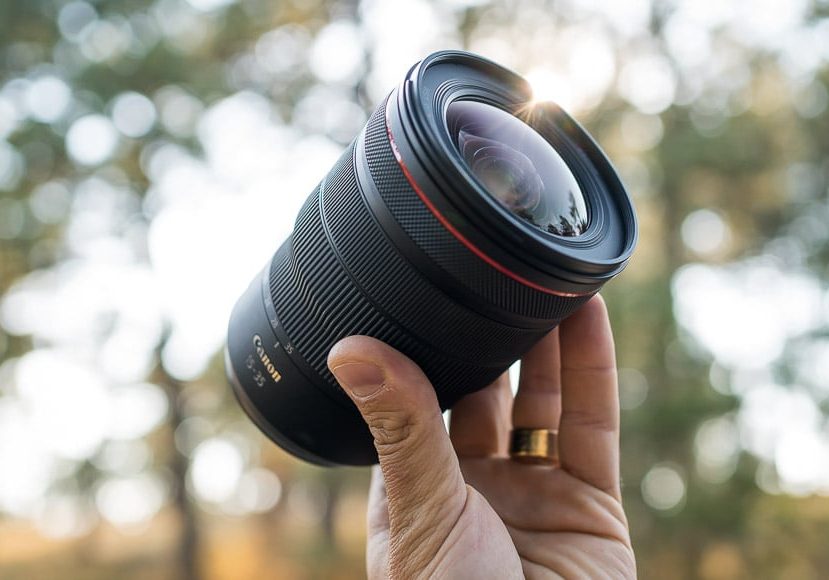
Credit: Marc Bergreen
Canon makes high-quality lenses that are perfect for night photography.
A bonus for users of their mirrorless R system is that you also have access to a huge selection of Canon DSLR and third-party DSLR lenses if you use an EF to RF adaptor.
Sigma 14mm f/1.8 DG HSM Art (Best Canon Lens for Night Sky Photography)
An excellent choice for capturing the beauty of the night sky.
With its f/1.8 aperture, it excels in low-light conditions, delivering clear, detailed shots of stars, constellations, and other celestial bodies.
And that wide focal length means you’ll be able to capture expansive views plus some of your surroundings (if you want).
It has a durable build and excellent optical quality with minimal distortion and chromatic aberration.
Rokinon 14mm f/2.8 IF ED UMC (Best Budget Canon Lens for Night Sky Photography)
Boasting an affordable price tag of under US$300, this lens offers decent low-light performance and a great focal length for capturing expansive nightscapes.
It produces sharp, clean images, and it’s a manual focus lens, so it gives you extra precision.
Canon RF 15-35mm f/2.8 L IS USM Lens (Best Canon RF Lens for Night Sky Photography)
With its f/2.8 aperture, this lens is a great performer in low-light conditions, making it an ideal choice for photographing the night sky.
It has a versatile focal range, in-built image stabilization, and superior optics, making it a versatile powerhouse for both astrophotography and diverse nocturnal scenes.
Sigma 14-24mm f/2.8 DG HSM Art (Best Canon Zoom Lens for Astrophotography)
This fast lens with a versatile 14-24mm focal range is ideal for capturing the intricate details of stars and celestial phenomena.
It produces sharp, high-resolution images with minimal distortion.
As well as being the best astrophotography lens, it’s also good for shooting night cityscapes and is less expensive than the Canon 16-35mm below.
Canon EF 16-35mm f/2.8L III (Best Canon Lens for Night City Photography)
This lens, with its f/2.8 aperture and versatile focal range, is perfect for city scenes and urban architecture at night.
The focal range gives you a lot of flexibility when it comes to composition, and whatever you compose will be sharp and colourful, thanks to the lens’ excellent optical quality.
It also has great autofocus capabilities: quick, quiet, and accurate.
Canon EF 35mm f/1.4L II (Best Canon Lens for Night Street Photography)
This is a compact lens that produces excellent, sharp, high-contrast imagery,
35mm is the ideal focal length for street photography, and when you have an aperture of f/1.4, it’s a breeze to capture those street images in low light.
You have the speed to let in a large amount of light for crisp images, as well as the ability to use higher shutter speeds to freeze the action.
Sigma 35mm f/1.4 DG HSM Art (Best Value Canon Lens for Night Street Photography)
Compared to other primes of this speed, the Sigma 35mm f/1.4 DG HSM Art is a bargain at around US$700.
Despite its budget-friendly price, it doesn’t skimp on quality.
As part of Sigma’s Art series, this lens provides precision optics, ensuring sharp images with minimal distortions.
Like the Canon above, its 35mm focal length and f/1.4 aperture are ideal for nighttime street photography.
Canon EF-S 24mm f/2.8 STM Lens (Best Budget APS-C Lens for Night Street Photography)
This sleek pancake 24mm lens (equivalent to 38mm full-frame) is a bargain at $150.
Its compact size gives you a discreet form factor, which is very handy in street photography.
It has quick, silent autofocus, and a decent aperture for capturing sharp night scenes.
Canon RF 35mm f/1.8 Macro (Best Canon RF Lens for Night Street Photography)
Another great option for Canon users looking for a discreet, compact design to take out onto the streets.
Its wide f/1.8 aperture lets in a lot of light, while the 35mm focal length offers a versatile perspective for those candid street moments.
It also has excellent autofocus.
The Best Nikon Lenses for Night Photography
Nikon users also have a lot of choices when it comes to night photography lenses.
As with the Canon system, Nikon’s F lenses (for DSLRs) can be used on their mirrorless Z cameras if you use an adapter.
Sigma 14mm f/1.8 DG HSM Art (Best Nikon Lens for Night Sky Photography)
As I covered this wide-angle lens for the Canon system (up above), I won’t repeat myself other than to say that, with its excellent image quality, wide field of view and f/1.8 aperture, it’s a great choice for shooting the night sky.
Samyang 14mm f/2.8 (Best Budget Nikon Lens for Night Sky Photography)
This wide-angle lens goes easy on the wallet at just under $300.
It has the same field of view as the Sigma above, but a different aperture.
It has a durable build and is a manual focus lens, which gives you the ability to hone your focal points – essential for photographing the night sky and cosmos.
Sigma 16mm f/1.4 DC DN Z (Best Budget APS-C Nikon Z Lens for Night Sky Photography)
Another affordable option for Nikon shooters, this one comes in at a shade under $500.
Like the Samyang above, it’s also a manual focus lens, which gives you the precision you need for astrophotography.
14mm (24mm full-frame equivalent) will give you the whole expanse of the night sky, and you can’t do much better than f/1.4 in terms of aperture.
Nikon AF-S 14-24mm f/2.8G (Best Nikon Lens for Night City Photography)
With an aperture of f/2.8 and a versatile 14-24mm focal range, this lens is an optimal choice for night city photography.
It produces sharp, high-contrast images, and has a responsive autofocus, perfect for capturing fast-paced city nightlife and urban landscapes.
It’s also a good lens for astrophotography where zoom is needed.
Nikon Z 14-24mm f/2.8 S (Best Nikon Z Lens for Night City Photography)
Essentially the same lens as the one above, but for the Nikon Z mirrorless system.
It has excellent optical quality, with glass that has ARNEO and Nano Crystal Coating that suppresses ghosting and flare, producing sharp, true-to-life nightscapes.
As with its DSLR counterpart, its focal range and aperture are versatile and fast enough to be ideal for nighttime city photography.
Nikon AF-S 35mm f/1.4G (Best Nikon F Lens for Night Street Photography)
Another high-quality Nikon F-mount lens.
The f/1.4 aperture is perfect for illuminating nighttime city street scenes, while the 35mm perspective gives you the human-eye perspective that’s ideal for storytelling.
The lens produces sharp, high-contrast images, and also has excellent autofocus capabilities.
Sigma 30mm f/1.4 (Best Budget APS-C Nikon Z Lens for Night Street Photography)
Here is a great option for you to get out and about shooting those urban nights without breaking the bank.
The versatile 30mm perspective (45mm equivalent) is perfect for framing street scenes and cityscapes. And the f/1.4 aperture will make sure that enough light comes in to make those scenes well-exposed and sharp.
The Best Sony Lenses for Night Photography
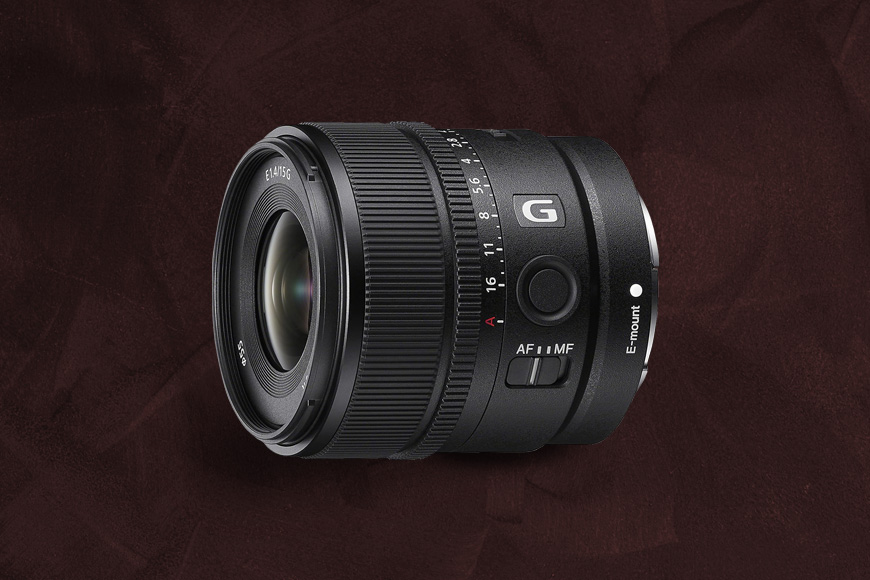
Another photography giant, Sony, also has you covered if you want to shoot in the dark.
Sony FE 14mm f/1.8 GMaster (Best Sony Lens for Night Sky Photography)
This is a premium lens with an aperture and focal length that is ideal for capturing the brilliance of the night sky.
It’s lightweight, compact, and durably constructed. And its optical quality is great too, producing sharp images and accurate colours.
It has excellent autofocus, and something that’s of particular use to astrophotographers is its ‘focus hold’ button, which ensures the focal point doesn’t move, even during long exposures.
Samyang 14mm f/2.8 (Best Budget Sony Lens for Night Sky Photography)
A weather-resistant budget (yet good quality) wide-angle lens for night sky photographers.
Although it comes in at just under $500, it’s no slouch.
That 14mm focal length will help you capture the entirety of the night sky, and f/2.8 will bring in enough light to show the details.
Sony E 15mm f/1.4 (Best Sony APS-C Lens for Night Sky Photography)
With an aperture of f/1.4, this is Sony’s fastest APS-C lens.
You’ll be able to let in all the light you need to show the intricate details of the constellations, and that 15mm (22mm full-frame equivalent) is still wide enough to show the entire expanse.
The optical quality is great, and the lens produces beautiful bokeh.
Sony FE 12-24mm f/2.8 G Master (Best Sony Lens for Night City Photography)
Another premium G-Master lens with a versatile focal range that can help you capture everything from architecture to urban scenes while you’re out and about in the night.
It produces images that are razor-sharp throughout the focal range and, as you’d expect from Sony, the colours are beautifully rendered and true-to-life.
Sigma 14-24mm f/2.8 (Best Value Sony Lens for Night City Photography)
Sigma Art glass is high-kit, and this option for Sony shooters is no different.
It has the same focal lengths and aperture as the Sony native lens above but for a lower price.
Its optical quality is great, and it has reliable autofocus that’s accurate, quick, and quiet.
Tamron 11-20mm f/2.8 (Best Sony APS-C Lens for Night City Photography)
This Tamron 11-20mm f/2.8 lens has a similar full frame equivalent focal range to the lenses above: 16.5-30mm.
As such, it’s ideal as a walkaround lens for shooting architecture and urban scenes during the night, and could also be suitable for a bit of astrophotography
Sigma 35mm f/1.4 Art DG HSM (Best Sony Lens for Night Street Photography)
The 35mm perspective, as it matches the human field of view, is ideal for the storytelling goal of street photography.
And, as this one has high-quality optics (sharp all the way to the corners) and a wide aperture of f/1.4, it is a great option for doing that in the dark.
Sigma 20mm f/1.4 DG DN Art (Best Sony APS-C Lens for Night Street Photography
This is very similar to the lens above.
It produces the same, excellent quality of image, but is designed for APS-C cameras.
That means it is the full-frame equivalent of 30mm, so it offers almost an identical perspective to the Sigma 35mm.
The Best Fujifilm Lenses for Night Photography
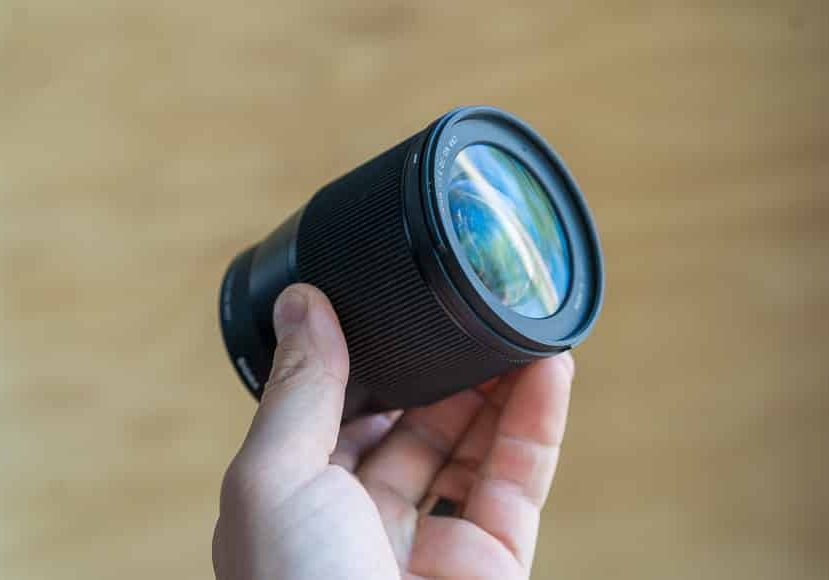
Credit: Marc Bergreen
Fujifilm, too, has a good selection of night photography lenses – both native options and third-party.
Viltrox 14mm f/1.4 (Best Fujifilm X Lens for Night Sky Photography)
This wide-angle prime is great for photographing the night skies thanks to its wide aperture, focal length (full-frame 20mm equivalent) and advanced optical design.
It produces clear images with accurate colours and no colour fringing or chromatic aberration, so those night-time vistas will look exactly as they’re supposed to.
Fujinon XF 8-16mm f/2.8R (Best Fujifilm X Lens for Night City Photography)
This is our choice for best X-Mount (APS-C) lens for night city photographers.
It has an ultra-wide focal length (full-frame equivalent of 12-24mm) and an aperture that allows enough light in to use the high shutter speeds necessary to freeze street scenes.
It has great, responsive autofocus and produces images that are crisp throughout the focal range.
Tamron 11-20mm f/2.8 (Best Value Fujifilm X Lens for Night City Photography)
Like most Tamrons, this lens is great value for money. For under US$900, you get a zoom lens with a constant, fast aperture throughout.
f/2.8 is more than enough for shooting nighttime cityscapes, architecture and urban scenes.
And, the 11-20mm focal length (full-frame equivalent of 16.5-30mm) gives you the option to switch between a wide-angle view and a more human perspective, which covers a lot of photo scenarios.
Fujifilm XF 23mm f/2 (Best Fujifilm X Lens for Night Street Photography)
This is a compact, walk-around prime lens with a great, wide aperture and the perfect ‘storytelling’ focal length, as it’s a full-frame equivalent of 35mm.
It’s weather-sealed, with a quiet autofocus and great image quality with reduced lens flare and ghosting.
Sigma 16mm f/1.4 (Best Wide Fujifilm X Lens for Night Street Photography)
A great, bright lens with a focal length equivalent to 24mm full-frame.
It’s versatile enough that, depending on the focal length you like to shoot at, it can be used for astrophotography, as a walk-around lens, and/or for street photography.
The Best MFT Lenses for Night Photography
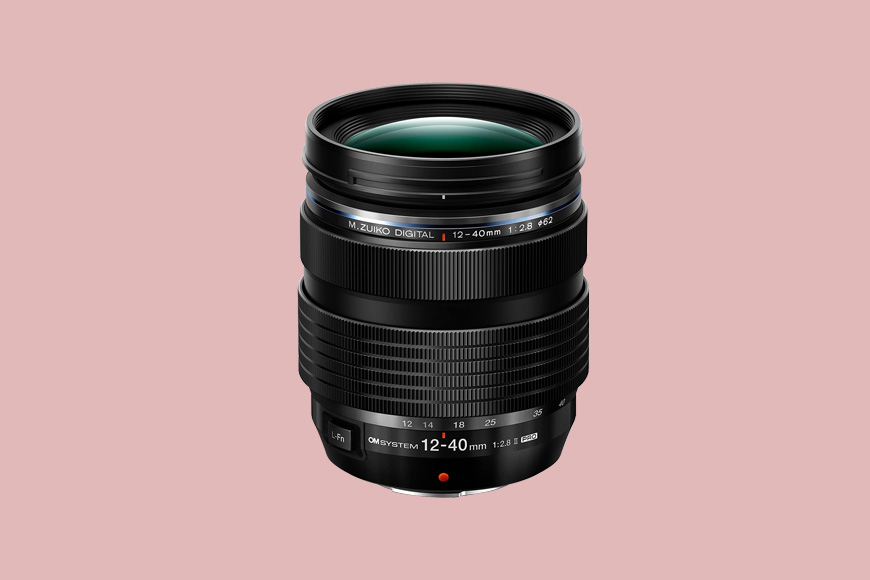
For anyone shooting micro four-thirds (so, Panasonic or Olympus), there are also some good night photography options.
Something to bear in mind:
Panasonic lenses will work on Olympus and vice versa, but the fastest autofocus is often going to be with native lenses.
Obviously, if you want a manual focus lens this is irrelevant, but if you need something with fast focusing (for example, if you need the lens mainly for street photography), look to native lenses first.
Leica Summilux 9mm f/1.7 (Best MFT Lens for Night Sky Photography)
With its full-frame equivalent focal length of 18mm, this compact, wide-aperture lens will help you capture the whole of the night sky.
It boasts edge-to-edge image sharpness and smooth, accurate, and virtually silent autofocus.
Laowa 7.5mm f/2 (Best Budget MFT Lens for Night Sky Photography)
Under US$400 gets you this 15mm full-frame equivalent lens with an aperture that lets in all the light you need for taking photographs of the night sky.
It produces clear, colour-accurate images, and is a manual focus lens, which gives you the kind of precision that’s ideal for astrophotography.
Leica 10-25mm f/1.7 (Best Premium MFT Lens for Night City Photography and Videography)
This is not cheap, but it’s a great piece of glass.
Its focal range is the full-frame equivalent of 20-50mm, which is a versatile range for all kinds of night scenes, and it doesn’t get much better than f/1.7 for nighttime shooting.
Its click-free aperture ring and quiet focusing capabilities mean that it’s also a good pick for night videographers.
Olympus 12-40mm F/2.8 Pro (Best Value MFT Lens for Night City Photography)
Given its range (full-frame 24-80mm equivalent) and high-resolution output, this lens is surprisingly compact.
It’s also weather-sealed, produces true-to-life colours, and has movie and still compatible (MSC) autofocus that is incredibly fast and quiet.
Leica 15mm f/1.7 (Best MFT Lens for Night Street Photography)
This is a lovely little lens, very light and compact, with a discrete form factor and features to make it shine on the street.
Its focal length (full-frame equivalent of 30mm) is slightly wider than the Olympus native 17mm, and it’s marginally faster.
The Leica has excellent contrast and colours, an aperture ring and AF/MF switch, and also in-body chromatic aberration and distortion correction.
The Best Night Photography Camera Settings
Achieving the best results in night photography requires you to consider your camera settings carefully.
Let’s answer some common questions, to help you understand the settings to choose.
What Exposure is Best for Night Photography?
You need a short exposure to freeze a scene, and a long exposure for things like cityscapes or star trails.
For exposures longer than your camera’s maximum shutter speed, use Bulb mode.
Use a tripod for stability, and a remote shutter release to control the duration of the exposure manually.
What Is the Best ISO for Night Photography?
Start with a lower ISO setting (e.g., ISO 100 or 200) to minimize noise.
Increase the ISO as needed to balance exposure, but be mindful of potential graininess at higher ISO values.
What Shutter Speed is Best for Night Photography?
Night photography and astrophotography often require slower shutter speeds.
Experiment with shutter speeds ranging from a few seconds to several minutes, depending on the scene and desired effects.
If you are shooting street photography, though, you’ll need to raise the shutter speed to freeze the action.
Which Aperture is Best for Night Photography?
Opt for a wide aperture (low f-number) like f/2.8 or lower.
This allows more light to reach the camera sensor, making it easier to capture the faint details of the night scene.
Which White Balance is Best for Night Photography?
Set the white balance manually or use a preset (e.g. tungsten) that matches the ambient lighting conditions.
Adjusting the white balance helps avoid colour casts and ensures an accurate representation of the night scene.
Should I use Manual Focus or Autofocus in Night Photography?
For astrophotography and anything that’s not shot handheld, use manual focus to ensure precise control over focusing, as autofocus may struggle in low-light situations.
You can also use your camera’s live view or focus peaking feature for accuracy.
When you’re shooting handheld, for example, when practicing nighttime street photography, you’ll need autofocus.
Which image format is best for Night Photography?
Raw. Use raw.
This format preserves more data and allows for greater flexibility in post-processing.
You’ll have more latitude when it comes to adjusting exposure or white balance and recovering details in low-light conditions.
Best Lens for Night Photography FAQs
What is the best lens for night street photography?
The best lenses for night photography on the street are versatile, fast lenses that allow photographers to react quickly to a scene or moment.
So, you need either a 35mm prime, or a zoom lens with good autofocus.
What is the best lens to use for night sky photography?
The best lenses for night photography of the sky are singular: you need wide-angle lens (most likely a prime) with a wide aperture.
You also don’t need autofocus. A manual focus lens is fine, and that will give you more precision.
What is the best lens to use for night cityscape photography?
For this kind of photography, a wide-angle zoom lens would give you the most versatility, allowing you to shoot architecture and urban landscapes and also zoom in on some details.
What size lens is best for night photography?
If you mean focal length, the best lenses for night photography are those that will allow you to shoot what you want to (e.g. wide angle lens for sky, zoom lens for street photography).
If you mean actual size and weight, then the best lenses for night photography are compact lenses. However, the only night photographers who need to worry about this are those who will be shooting handheld and walking around a lot.
Is a 50mm lens good for night photography?
Nifty fifties are not the best lenses for night photography, as they are a bit of a restrictive focal length for the night unless you’re shooting portraits.
They’re too long to shoot the expanse of the sky, and not wide enough to really comfortably shoot street scenes.
What is the best lens for sports photography at night?
The best lenses for night photography when shooting sport are standard zooms or telephoto lenses. Sports at night generally take place in well-lit, floodlit areas.
Do I really need a fast aperture for night street photography?
Yes, it’s essential!
The best lenses for night photography in the street have fast apertures.
A fast aperture lets in enough light to illuminate your scene and also allows you to use high shutter speeds if you need to freeze action.










